Whittenburg Gerald E., Altus-Buller Martha. Income Tax Fundamentals
Подождите немного. Документ загружается.

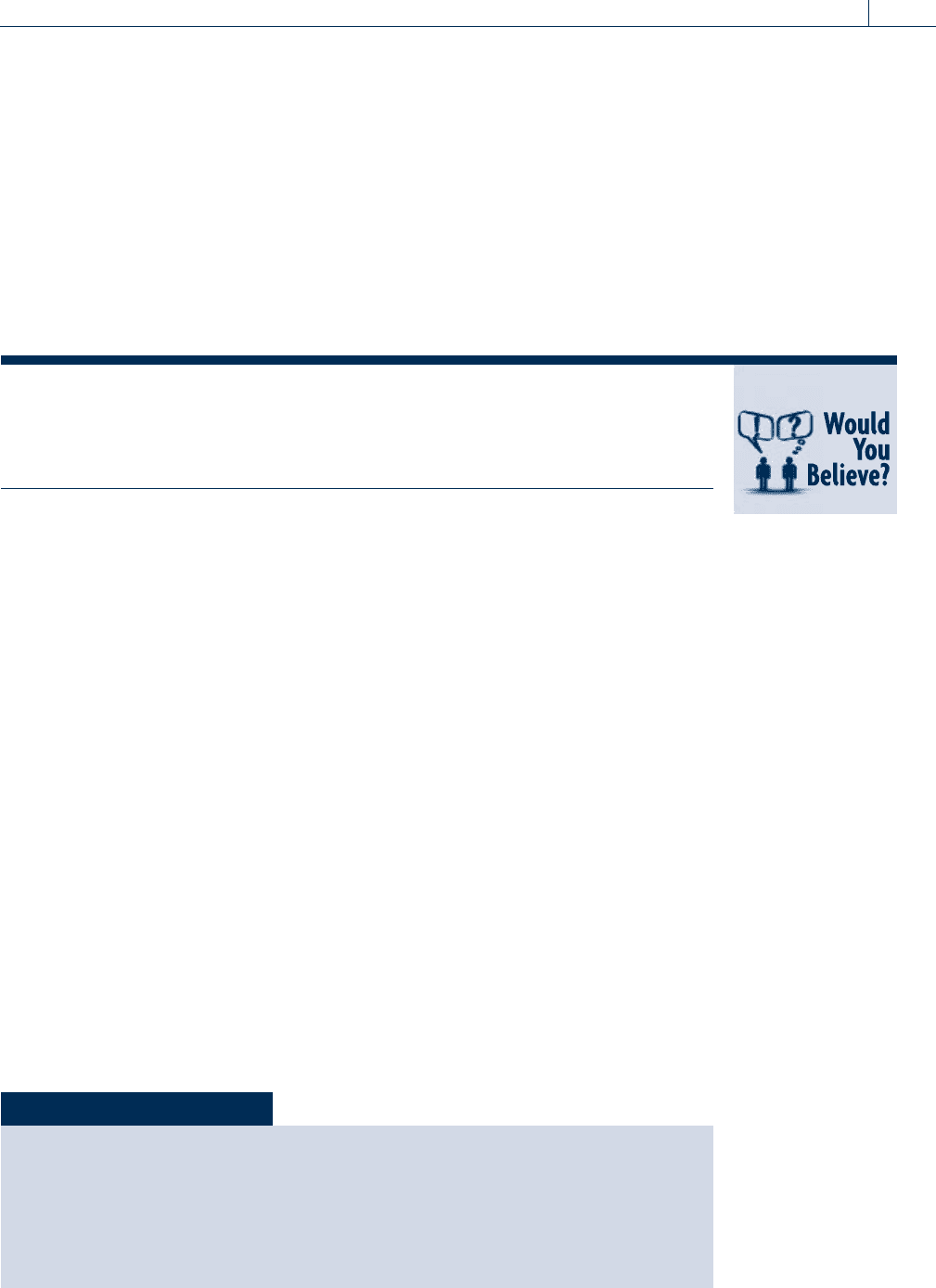
The allocation of tip income can be accomplished in one of four ways. The employer
may allocate the amount based on (1) gross receipts per employee, (2) hours worked by
each employee (available only to employers having fewer than the equivalent of twenty-
five full-time employees), (3) a good fa ith agreement as explained on Form 8027,
Employer’s Annual Information Return of Tip Income and Allocated Tips, or (4) the
new Attributed Tip Income Program (ATIP), which allows any reasonable method for
allocating tips to employees and may be elected in 2010 by checking a box at the beginning
of Form 8027. For a detailed explanation of the allocation process, see the instructions for
Form 8027. For more information on tip reporting in general, see the IRS Web site or a
tax research service.
Despite IRS efforts, tax cheating is on the rise. The Treasury Department esti-
mated that unreported income and other forms of cheating cost the govern-
ment $300 billion or more a year. Although there is disagreement about the
actual amount of tax cheating, experts agree it is a significant problem.
Backup Withholding
In some situations, individuals may be subject to backup withholding on payments such
as interest and dividends. The purpose of backup withholding is to ensure that income tax
is paid on income reported on Form 1099 (see Section 9.5). If backup withholding
applies, the payor (i.e., bank or insurance company) must withhold 28 percent of the
amount paid to the taxpayer. Payors are required to use backup withholding in the fol-
lowing cases:
1. The taxpayer does not give the payor his or her taxpayer identification number (e.g.,
Social Security number),
2. The taxpayer fails to certify that he or she is not subject to backup withholding,
3. The IRS informs the payor that the taxpayer gave an incorrect identification number, or
4. The IRS informs the payor to start withholding because the taxpayer has not reported
the income on his or her tax return.
EXAMPLE Barbra earned $2,000 in interest income from Cactus Savings Bank.
Barbra failed to certify that she was not subject to backup withhold-
ing. As a result, the bank must withhold taxes of $560 (28 percent of
$2,000) from the interest payments to Barbra. N
Taxpayers who give false information to avoid backup withholding are subject to a $500
civil penalty and a criminal penalty of up to $1,000 or up to 1 year of imprisonment, or both.
Self-Study Problem 9.1
For 2010, John earns $3,000 per month and has three dependent children. He
is divorce d and claims five allowances on his Form W-4. Calculate John’s with-
holding using:
1. The percentage method $ ____________
2. The wage bracket method $ ____________
Section 9.1
Withholding Methods 9-7
Copyright 2010 Cengage Learning. All Rights Reserved. May not be copied, scanned, or duplicated, in whole or in part. Due to electronic rights, some third party content may be suppressed from the eBook and/or eChapter(s).
Editorial review has deemed that any suppressed content does not materially affect the overall learning experience. Cengage Learning reserves the right to remove additional content at any time if subsequent rights restrictions require it.
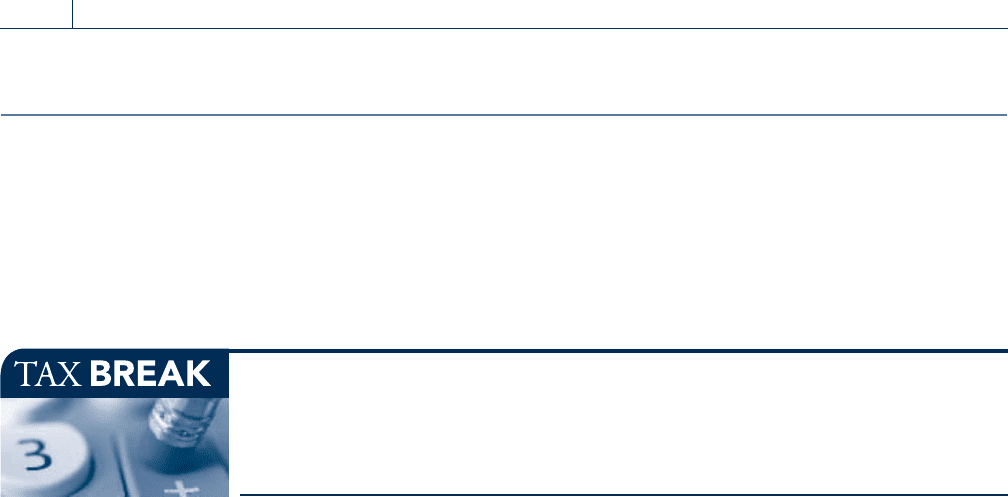
SECTION 9.2
ESTIMATED PAYMENTS
Self-employed taxpayers are not subject to withholding; however, they must make quar-
terly estimated tax payments. Taxpayers with large amounts of interest, dividends, and
other income not subject to withholding are also generally required to make estimated pay-
ments. Payments are made in four installments on April 15, June 15, and September 15 of the
tax year, and January 15 of the following year, based on the taxpayer’s estimate of the amount
of the tax liability for the year. A taxpayer with self-employment income must begin making
the payments when he or she first meets the filing requirements.
Never write out a check to the ‘‘IRS.’’ The IRS issues this warning every year,
because ‘‘IRS’’ may be easily changed to ‘‘MRS’’ plus an individual’s name if
the check falls into the wrong hands. Checks may be made payable to the U.S.
Treasury, as a reminder that the IRS is merely the collector of revenue for the
federal government.
Any individual taxpayer who has estimated tax for the year of $1,000 or more, after sub-
tracting withholding, a nd whose withholding does not equal or exceed the ‘‘required
annual payment,’’ must make quarterly estimated payments. The required annual payment
is the smallest of the following amounts:
1. Ninety percent of the tax shown on the current year’s return, or
2. One hundred percent of the tax shown on the preceding year’s return (such return
must cover a full 12 months), or
3. Ninety percent of the current-year tax determined by placing taxable income, alterna-
tive min imum taxable income, and adjusted self-employment income on an annual-
ized basis for each quarter.
A special rule applies to individuals with adjusted gross income in excess of $150,000 for
the previous year. These high-income taxpayers must pay 110 percent of 2010 tax for year
2011 estimated payments, instead of 100 percent, to meet the requirements in the second
exception above.
Estimated payments need not be paid if the estimated tax, after subtracting withholding,
can reasonably be expected to be less than $1,000. Therefore, employees who also have
self-employment income may avoid making estimated payments by filing a new Form
W-4 and increasing the amount of their withholding on their regular salary.
The IRS imposes a nondeductible pena lty on the amounts of any underpayments of esti-
mated tax. The penalty applies when any installment is less than the required annual pay-
ment divided by the number of installments that should have been made, which is usually
four. Form 2210, Underpayment of Estimated Tax by Individuals and Fiduciaries, is used
for the calculation of the penalty associated with the underpayment of estimated tax.
Good tax planning dictates that a taxpayer postpone payment of taxes as long as no pen-
alty is imposed. Unpaid taxes are equivalent to an interest-free loan from the government.
Therefore, taxpayers should base their estimated payments on the method which results in
the lowest amount of required quarterly or annual payment. For example, a taxpayer who
expects his tax liability to increase might base his estimated payments this year on the
amount of the tax liability for the prior year.
9-8 Chapter 9
Withholding, Estimated Payments, and Payroll Taxes
Copyright 2010 Cengage Learning. All Rights Reserved. May not be copied, scanned, or duplicated, in whole or in part. Due to electronic rights, some third party content may be suppressed from the eBook and/or eChapter(s).
Editorial review has deemed that any suppressed content does not materially affect the overall learning experience. Cengage Learning reserves the right to remove additional content at any time if subsequent rights restrictions require it.
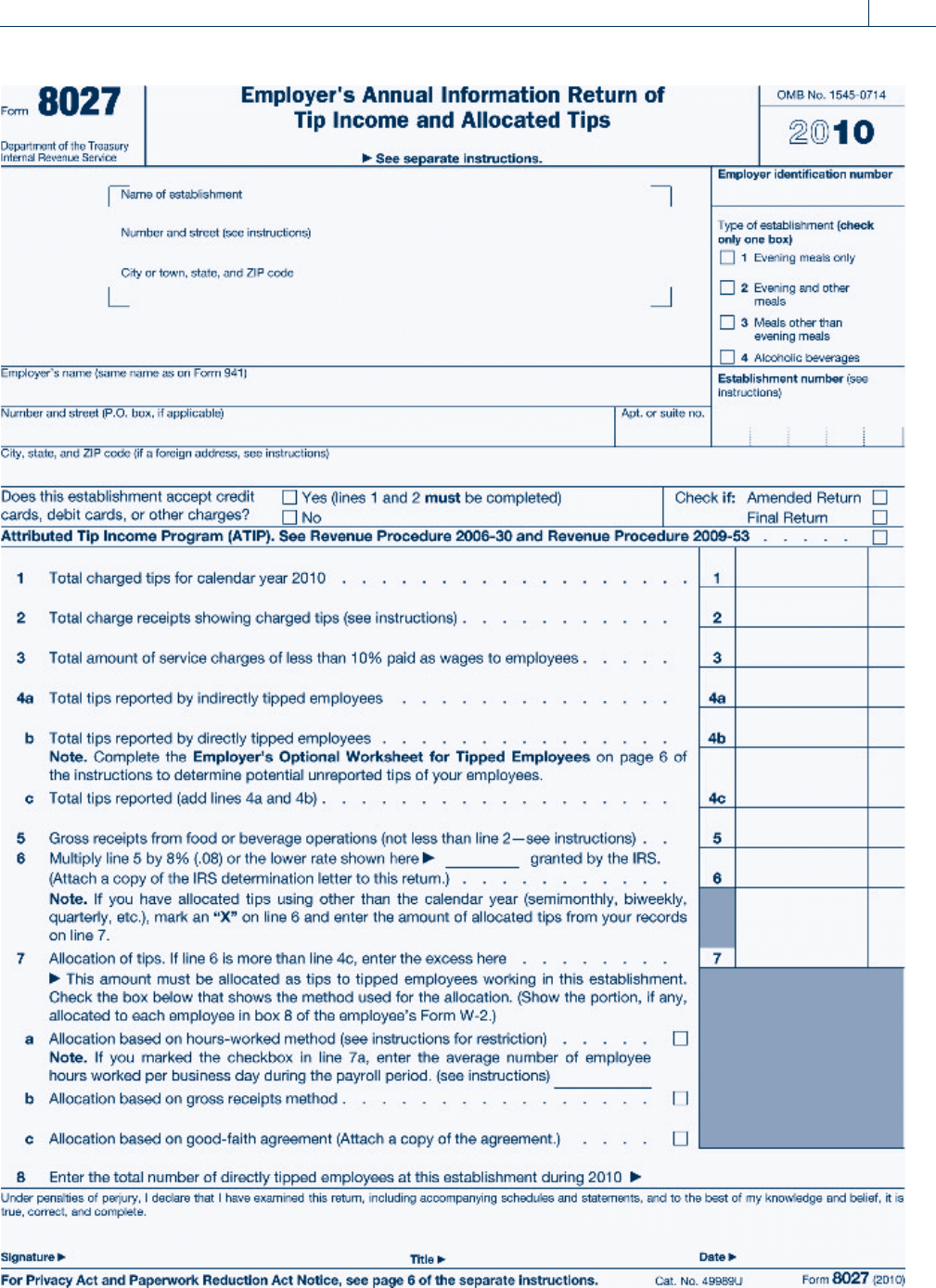
6,000
Kountry Kitchen
X
X
Kountry Kitchen
6,000
92,000
7,360
1,360
18
Section 9.2
Estimated Payments 9-9
Copyright 2010 Cengage Learning. All Rights Reserved. May not be copied, scanned, or duplicated, in whole or in part. Due to electronic rights, some third party content may be suppressed from the eBook and/or eChapter(s).
Editorial review has deemed that any suppressed content does not materially affect the overall learning experience. Cengage Learning reserves the right to remove additional content at any time if subsequent rights restrictions require it.
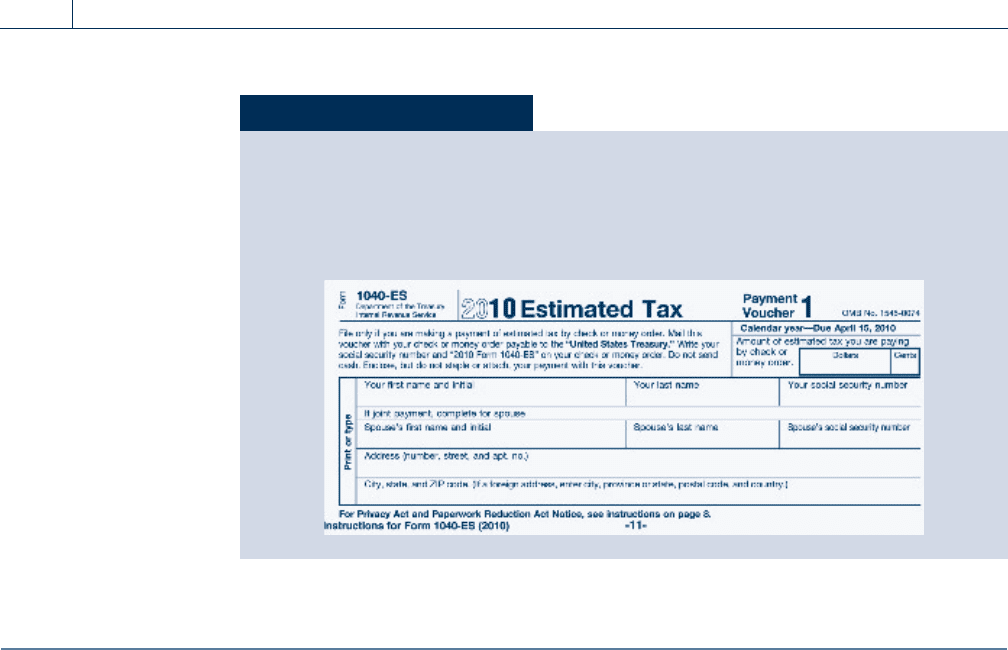
SECTION 9.3
THE FICA TAX
The Federal Insurance Contributions Act (FICA) imposed Social Security taxes. It was
passed by Congress in 1935 to provide benefits for qualified retired and disabled workers.
If a worker should die, it also provides the family of the worker with benefits. The Medicare
program for the elderly is also funded by FICA taxes.
FICA taxes have two parts, Social Security (old age, survivors, and disability insurance,
OASDI) and Medicare (hospital insurance). Employees and their employers are both
required to pay FICA taxes. Employers withhold a specified percentage of each employee’s
wages up to a maximum base amount, match the amount withheld with an equal amount,
and pay the total to the Social Security Administration.
For 2010, the Social Security (OASDI) tax rate is 6.2 percent and the Medicare tax rate is
1.45 percent each for employees and employers. The maximum wage subject to the Social
Security portion of the FICA tax is $106,800, and all wages are subject to the Medicare por-
tion of the FICA tax. The maximum amounts of Social Security to which the rates apply
have increased over the years.
Year Employee % Employer % Maximum Base
2007 6.20 6.20 $97,500 (Social Security)
1.45 1.45 Unlimited (Medicare)
2008 6.20 6.20 $102,000 (Social Security)
1.45 1.45 Unlimited (Medicare)
2009 6.20 6.20 $106,800 (Social Security)
1.45 1.45 Unlimited (Medicare)
2010 6.20 6.20 $106,800 (Social Security)
1.45 1.45 Unlimited (Medicare)
The original FICA tax in 1935 was 1 percent of the first $3,000 in earnings.
Self-Study Problem 9.2
Ray Adams (Social Security number 466-47-1131) estimates his required annual
payment for 2010 to be $7,560. He has a $510 overpayment of last year’s taxes
that he wishes to apply to the first quarter estimated tax payment for 2010.
Complete the first quarter voucher below for Ray for 2010 by assuming any
additional information, such as Ray’s address.
9-10 Chapter 9
Withholding, Estimated Payments, and Payroll Taxes
Copyright 2010 Cengage Learning. All Rights Reserved. May not be copied, scanned, or duplicated, in whole or in part. Due to electronic rights, some third party content may be suppressed from the eBook and/or eChapter(s).
Editorial review has deemed that any suppressed content does not materially affect the overall learning experience. Cengage Learning reserves the right to remove additional content at any time if subsequent rights restrictions require it.
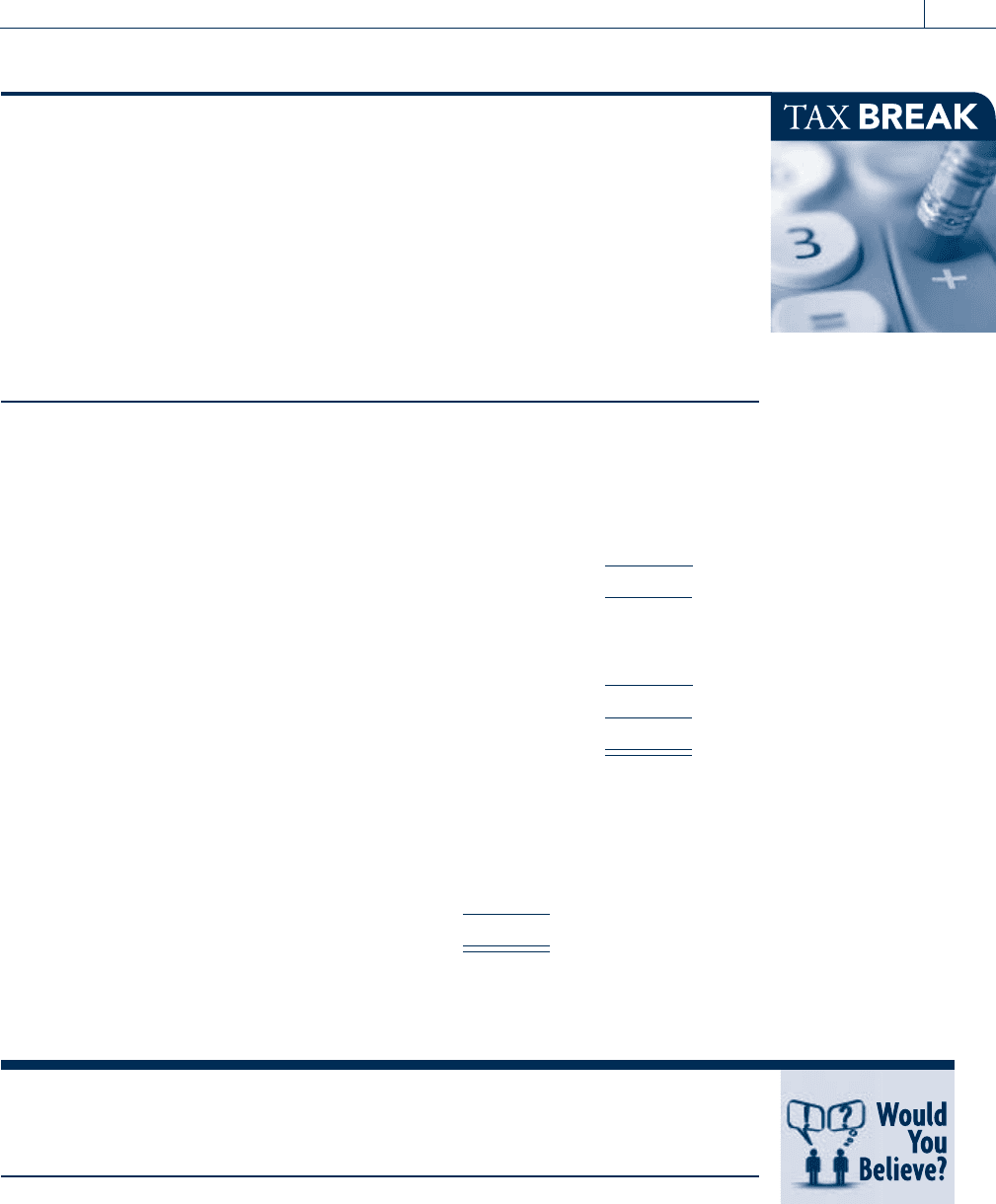
Workers age 25 and over now receive an annual statement of Social Security ben-
efits about 3 months before their birth month. The statement provides estimates
of projected retirement, survivors’, and disability benefits. It also shows the work-
er’s Social Security earnings history, giving the worker an opportunity to correct
any errors or omissions.
Workers can also request an estimate of benefits at any time through the
Social Security Administration Web site (www.ssa.gov) or by mailing in Form
SSA-7004, which can be downloaded from the site. The advantage of making a
separate request is that workers can provide an exact retirement age as well as
an estimate of future earnings for use in making benefit projections. These pro-
jections may be more precise than those in the automatic annual statement.
(Source: Social Security Administration (www.ssa.gov))
EXAMPLE Katherine earns $21,500 for 2010. The FICA tax on her wages is calcu-
lated as follows:
Katherine: Soc. Sec. — 6.2% $21,500 $1,333.00
Medicare — 1.45% $21,500
311.75
Total employee FICA tax
$1,644.75
Katherine’s
employer: Soc. Sec. — 6.2% $21,500 $1,333.00
Medicare — 1.45% $21,500
311.75
Total employer FICA tax
$1,644.75
Total FICA tax
$3,289.50
N
EXAMPLE Sam is an employee of Serissa Company. His salary for 2010 is
$132,000. Sam’s portion of the FICA tax is calculated as follows:
Soc. Sec. — 6.2% $106,800 $6,621.60
Medicare — 1.45% $132,000
1,914.00
Total employee FICA tax
$8,535.60
The total combined FICA tax (employee’s and employer’s share) is
$17,071.20. N
According to the Congressional Budget Office, more than one-third of ho use-
holds pay mor e in FICA tax than in income tax. If the emplo yer share of FICA
is included, this number rises to 70 percent.
Overpayment of FICA Taxes
Taxpayers who work for more than one employer during the same tax year may pay more
than the maximum amount of FICA taxes. This occurs when the taxpayer’s total wages are
more than the maximum base amount(s) for the year. When this happens, the taxpayer
should compute the excess taxes paid, and report the excess on Form 1040 as an additional
payment against his or her tax liability.
Section 9.3
The FICA Tax 9-11
Copyright 2010 Cengage Learning. All Rights Reserved. May not be copied, scanned, or duplicated, in whole or in part. Due to electronic rights, some third party content may be suppressed from the eBook and/or eChapter(s).
Editorial review has deemed that any suppressed content does not materially affect the overall learning experience. Cengage Learning reserves the right to remove additional content at any time if subsequent rights restrictions require it.
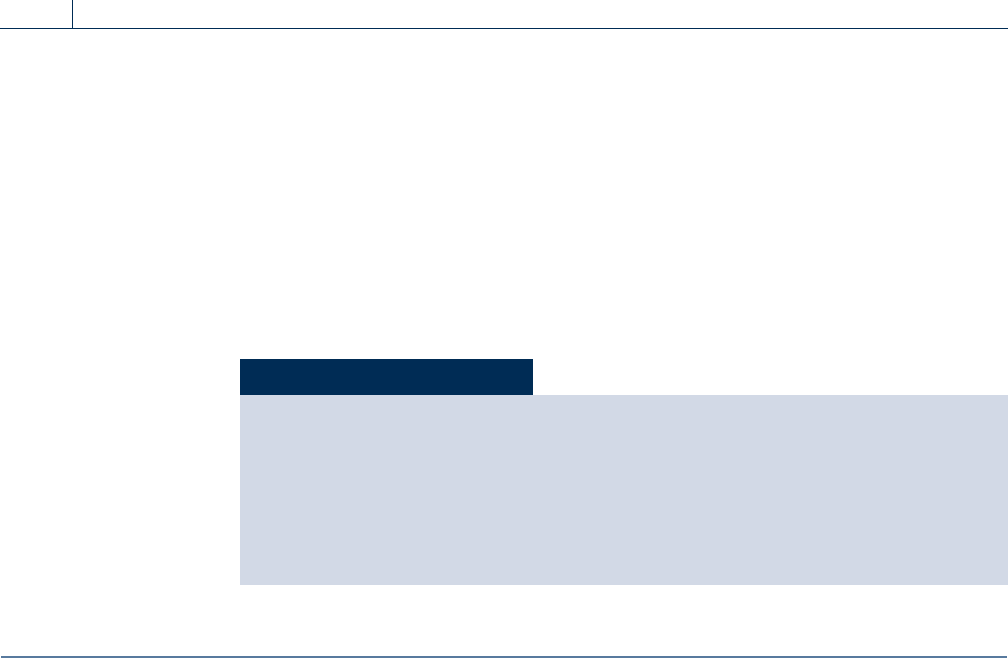
EXAMPLE Jerry worked for two employers during 2010. The first employer with-
held and paid FICA taxes on $70,000 of salary paid to Jerry, and the
second employer withheld and paid FICA taxes on $50,000 of salary
paid to Jerry. The amount of Jerry’s excess FICA taxes paid for 2010 is
computed as follows: 6.2% (Social Security rate) [$70,000 þ $50,000
$106,800 (maximum for Social Security portion of FICA tax)] ¼ $818.
Jerry receives a payment against his 2010 income tax liability equal
to the excess Social Security taxes of $818. No excess Medicare tax
has been paid, as there is no upper limit on Medicare wages. N
SECTION 9.4 FEDERAL TAX DEPOSIT SYSTEM
Employers must make periodic deposits of t he taxes that are withheld from employees’
wages. The frequency of the deposits depends on the total income tax withheld and the
total FICA taxes for all employees. Employers are either monthly depositors or semiweekly
depositors, depending on the total income taxes withheld from wages and FICA taxes
attributable to wages. Prior to the beginning of each calendar year, taxpayers are required
to determine which of the two deposit schedules they are required to use. If withholding
and FICA taxes of $100,000 or more are accumulated at any time during the year, the
depositor is subject to a special one-day deposit rule.
Monthly or semiweekly deposit status is determined by using a lookback period, consist-
ing of the four quarters beginning July 1 of the second preceding year and ending June 30
of the prior year. If the total income tax withheld from wages and FICA attributable to
wages for the four quarters in the lookback period is $50,000 or less, employers are
monthly depositors for the current year. Monthly depositors must make deposits of
employment taxes and taxes withheld by the fifteenth day of the month following the
month of withholding. New employers are automatically monthly depositors.
If the total income tax withheld from wages and FICA attributable to wages for the four
quarters in the lookback period is more than $50,000, the employer is a semiweekly depos-
itor for the current year. Taxes on payments made on Wednesday, Thursday, or Friday
must be deposited by the following Wednesday; taxes on payments made on the other
days of the week must be deposited by the following Friday. If a deposit is scheduled for
a day that is not a banking day, the deposit is considered to be made timely if it is made
by the close of the next banking day.
EXAMPLE Tom runs a small business with ten employees. During the lookback
period for the current year, the total withholding and FICA taxes
amounted to $15,600. Since this is less than $50,000, Tom is a monthly
depositor. His payroll tax deposits must be made by the fifteenth day
of the month following the month of withholding. N
Self-Study Problem 9.3
Debbie earns $120,000 in 2010. Calculate the total FICA tax that must be paid by:
Debbie: Soc. Sec. $ ____________
Medicare $ ____________
Debbie’s employer: Soc. Sec. $ ____________
Medicare $ ____________
Total FICA tax $ ____________
9-12 Chapter 9
Withholding, Estimated Payments, and Payroll Taxes
Copyright 2010 Cengage Learning. All Rights Reserved. May not be copied, scanned, or duplicated, in whole or in part. Due to electronic rights, some third party content may be suppressed from the eBook and/or eChapter(s).
Editorial review has deemed that any suppressed content does not materially affect the overall learning experience. Cengage Learning reserves the right to remove additional content at any time if subsequent rights restrictions require it.

Since 2006, nearly a million very small employers with employment tax liability of
$1,000 or less have been allowed to file and pay employment taxes just once a year, instead
of quarterly; for example, by January 31 of 2011 for 2010 employment taxes. Qualifying
small employers receive written notification from the IRS that they should file using a
Form 944 instead of the standard Form 9 41 used by most employers. The Form 944,
along with payment of tax, is due at the end of the month following the taxpayer’s year end.
Employer deposits are made to any commercial bank that is an authorized depository for
federal taxes. All national banks and many state banks are depositories. If the deposit is
mailed, it must have been mailed as of the second day before the due date to be considered
timely. Taxpayers should use registered or certified mail to document the mailing date.
Deposits may also be made by electronic funds transfer (EFT). Employers with tax deposits
exceeding certain dollar amounts and those who were required to make payments by EFTPS
(Electronic Federal Tax Payment System) in the previous year are required to make pay-
ments using EFTPS; failure to do so may subject the depositor to a 10 percent penalty.
Tax payments (monthly, semiweekly, or daily for large depositors) not made by EFTPS
must be accompanied by Form 8109 (Federal Tax Deposit Coupon). Generally, employers
must file Form 941, Employer’s Quarterly Federal Tax R eturn, which reports the federal
income taxes withheld from wages and the total FICA taxes attributable to wages paid dur-
ing each quarter. Form 941 must be accompanied by any payroll taxes not yet deposited for
the quarter. A special deposit rule allows small employers who accumulate less than $2,500
tax liability during a quarter to skip monthly payments and pay the entire amount of their
payroll taxes with their quarterly Form 941. Form 941 must be filed by the last day of the
month following the end of the quarter. For example, the first quarter Form 941, covering
the months of January through March, must be filed by April 30. The Form 941 e-file pro-
gram allows a taxpayer to electronically file Form 941 or Form 944.
The IRS plans to eliminate the use of federal tax deposit coupons and require
electronic filing and electronic tax deposits after 2010, exempting only small
employers paying less than $2,500 a quarter in employment taxes.
Self-Study Problem 9.4
For the first quarter of 2010, Rita O’Miya has two employees. The payroll infor-
mation for these two employees for the first quarter is as follows:
Mary Chris
January February March January February March
Gross wages $2,000 $2,000 $2,100 $1,000 $1,000 $1,500
Federal income
tax withheld
230 230 235 60 60 180
FICA tax
withheld
153 153 161 77 77 115
Rita deposited $750 on February 15, $750 on March 15, and $967 on April 15.
Using this information, complete Rita’s Form 941, on page 9-15, for the first
quarter of 2010.
Section 9.4
Federal Tax Deposit System 9-13
Copyright 2010 Cengage Learning. All Rights Reserved. May not be copied, scanned, or duplicated, in whole or in part. Due to electronic rights, some third party content may be suppressed from the eBook and/or eChapter(s).
Editorial review has deemed that any suppressed content does not materially affect the overall learning experience. Cengage Learning reserves the right to remove additional content at any time if subsequent rights restrictions require it.
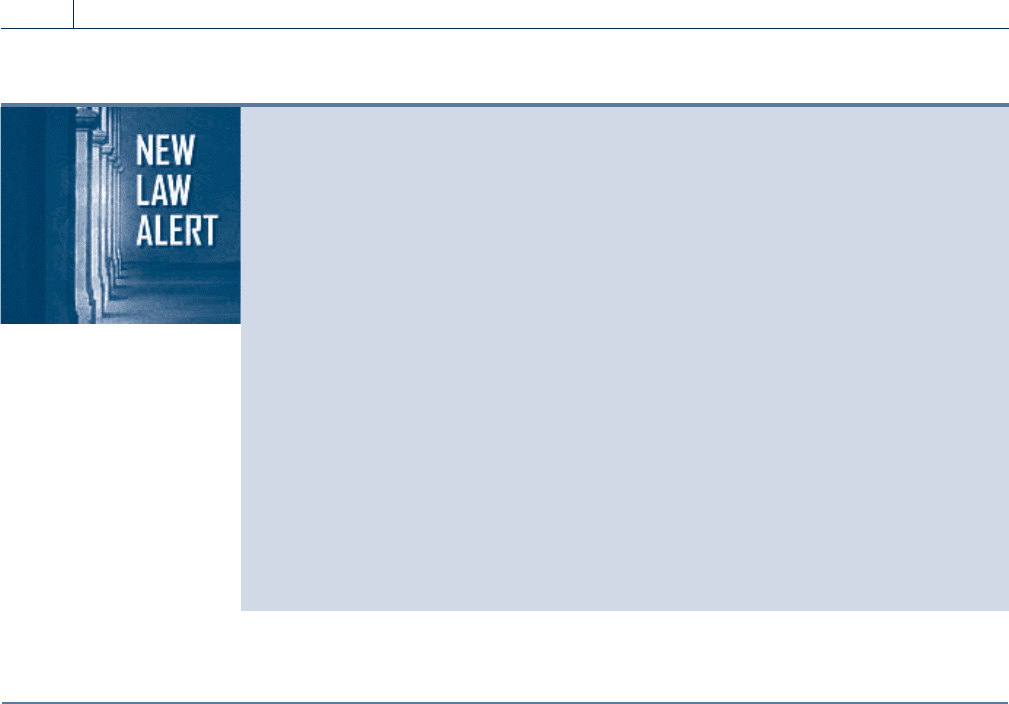
The President signed the Hiring Incentives to Restore Employment Act, or HIRE
Act, into law on March 18, 2010. The new law contains a brief payroll tax hol-
iday for employers of newly-hired workers and an employer credit for retained
workers hired during the payroll tax holiday.
Payroll Tax Holiday: Employers hiring previously unemployed or underem-
ployed new employees after February 3, 2010, and before January 1, 2011,
will not have to pay t he 6.2 percent employer portion of Social Security taxes
that would have been due for those employees for the period after March
18, 2010, and before January 1, 2011 . The newly-hired employees must
certify on Form W-11 that they were employed for no more than 40 hours in
the 60-day period ending on the date they began work in the new job. A recent
college graduate can qualify under this definition. The reduction in payroll
taxes will be made on the employer’s payroll tax return, Form 941, and will
not be claimed as a credit on the income tax return of the employer.
Credit for Retained Workers: Any worker who qualifies as a newly-hired
employee under the payroll tax holiday described above, and who is retained
by the employer for at least 52 weeks, may qualify the employer for a tax credit
of up to $1,000. Because the time period will not be met for any new hire until
sometime in the 2011 tax year, this credit will be claime d on 2011 income tax
returns only.
SECTION 9.5
EMPLOYER REPORTING REQUIREMENTS
On or before January 31 of the year following the calendar year of payment, an employer
must furnish to each employee two copies of the employee’s Wage and Tax Statement,
Form W-2, for the previous calendar year. If employment is terminated before the end
of the year and the employee requests a Form W-2, the employer must furnish the
Form W-2 within 30 days after the last wage payment is made or after the employee
request, whichever is later. Otherwise the general rule requiring the W-2 to be furnished
to the employee by January 31 applies. The original copy (Copy A) of all W-2 forms and
Form W-3 (Transmittal of Income and Tax Statements) must be filed with the Social
Security Administration by February 28 of the year following the calendar year of payment.
Copy B of Form W-2 is filed with the employee’s federal tax return. Employers retain
Copy D of Form W-2 for their records. Extra copies of Form W-2 are prepared for the
employee to use when filing state and local tax returns.
Form W-2 is used to report wages, tips, and other compensation paid to an employee.
Not all of the amounts included on a taxpayer’s Form W-2 are subject to income tax with-
holding. Among the items which must be reported on the employee’s Form W-2 are reim-
bursements for nonqualified moving expenses (a nonqualified moving expense is an
expense the employee cannot deduct for tax purposes), excess group-term life insurance
premiums, the value of noncash prizes and awards presented to individuals normally
paid on a commission basis, and certain reimbursements of travel and other ordinary
and necessary expenses. Special rules apply to the reimbursement of travel and other ordi-
nary and necessary employee business expenses.
If an employee is reimbursed for travel and other ordinary and necessary business
expenses, income and employment tax withholding m ay be required. If a reimbursement
payment is considered to have been made under an accountable plan, as discussed in Chap-
ter 4, the amount is excluded from the employee’s gross income and consequently is not
9-14 Chapter 9
Withholding, Estimated Payments, and Payroll Taxes
Copyright 2010 Cengage Learning. All Rights Reserved. May not be copied, scanned, or duplicated, in whole or in part. Due to electronic rights, some third party content may be suppressed from the eBook and/or eChapter(s).
Editorial review has deemed that any suppressed content does not materially affect the overall learning experience. Cengage Learning reserves the right to remove additional content at any time if subsequent rights restrictions require it.

Section 9.5
Employer Reporting Requirements 9-15
Copyright 2010 Cengage Learning. All Rights Reserved. May not be copied, scanned, or duplicated, in whole or in part. Due to electronic rights, some third party content may be suppressed from the eBook and/or eChapter(s).
Editorial review has deemed that any suppressed content does not materially affect the overall learning experience. Cengage Learning reserves the right to remove additional content at any time if subsequent rights restrictions require it.

9-16 Chapter 9
Withholding, Estimated Payments, and Payroll Taxes
Copyright 2010 Cengage Learning. All Rights Reserved. May not be copied, scanned, or duplicated, in whole or in part. Due to electronic rights, some third party content may be suppressed from the eBook and/or eChapter(s).
Editorial review has deemed that any suppressed content does not materially affect the overall learning experience. Cengage Learning reserves the right to remove additional content at any time if subsequent rights restrictions require it.
